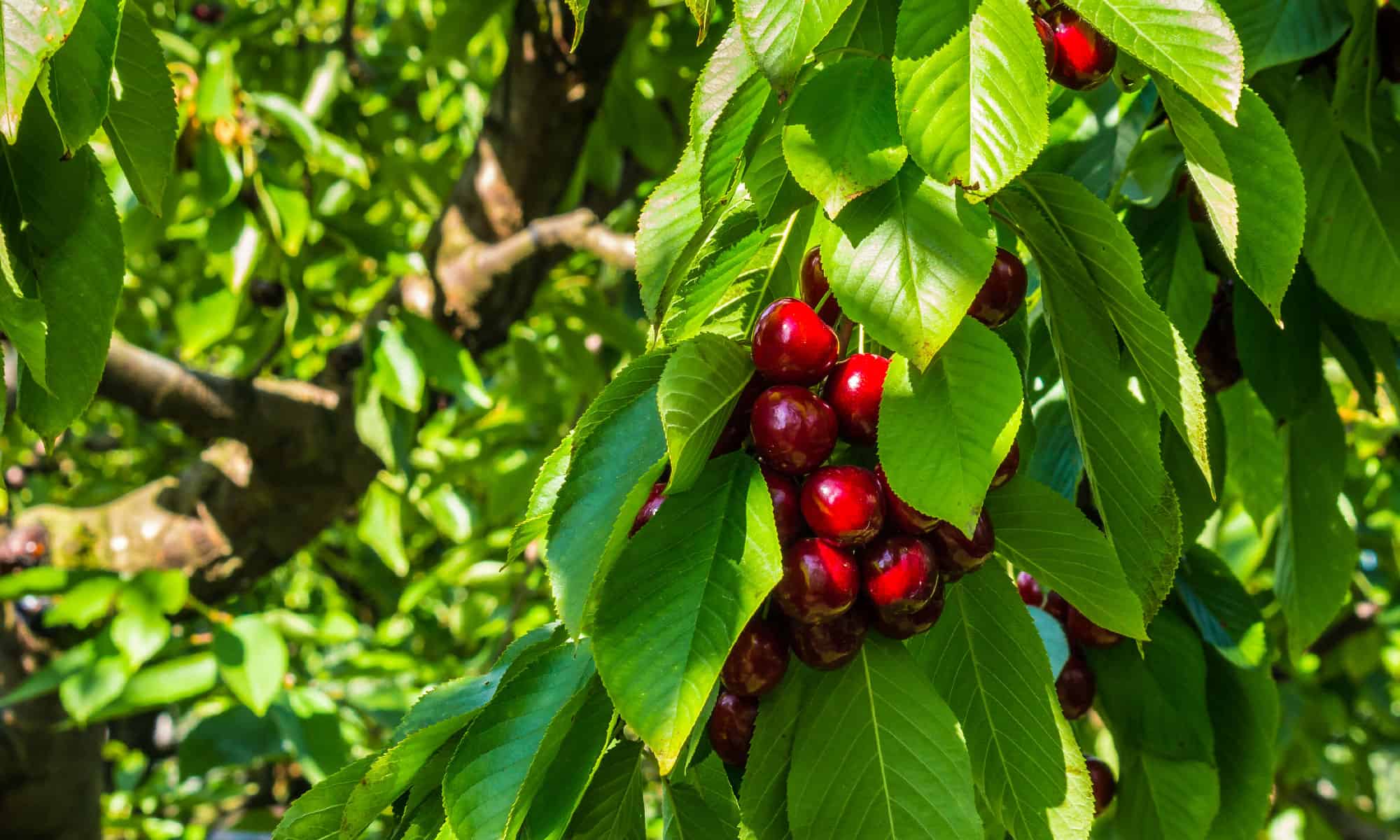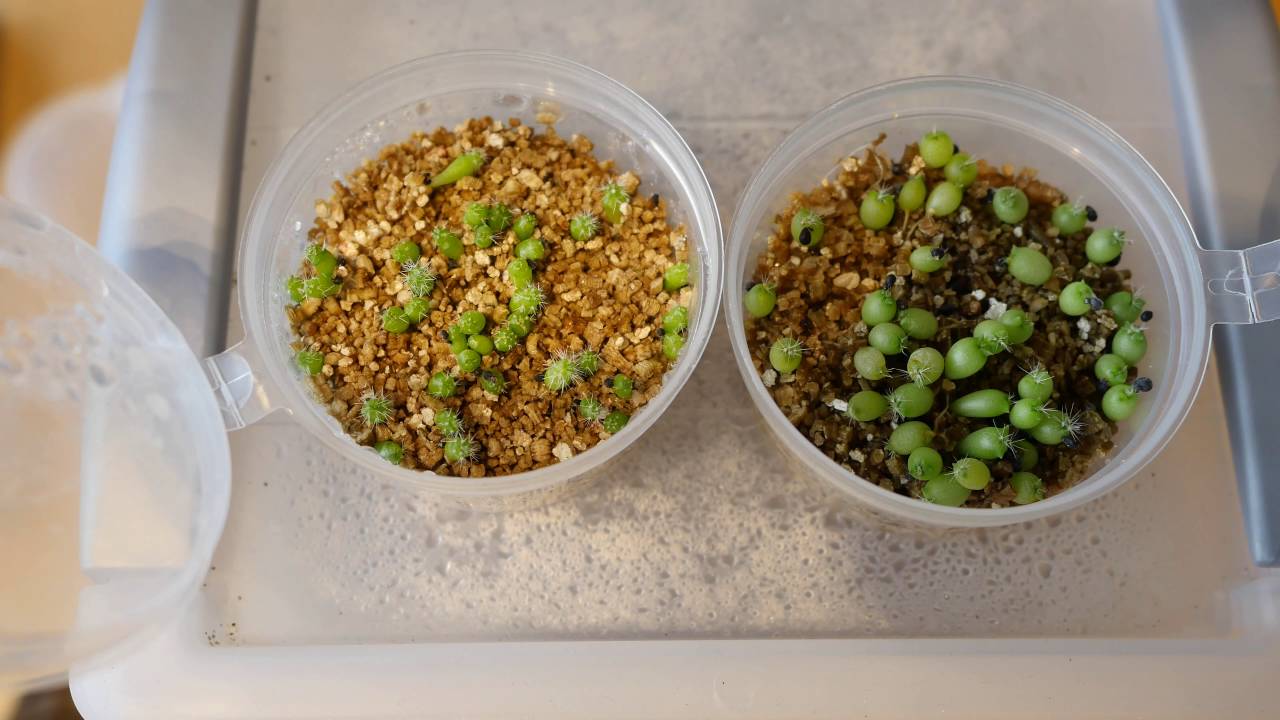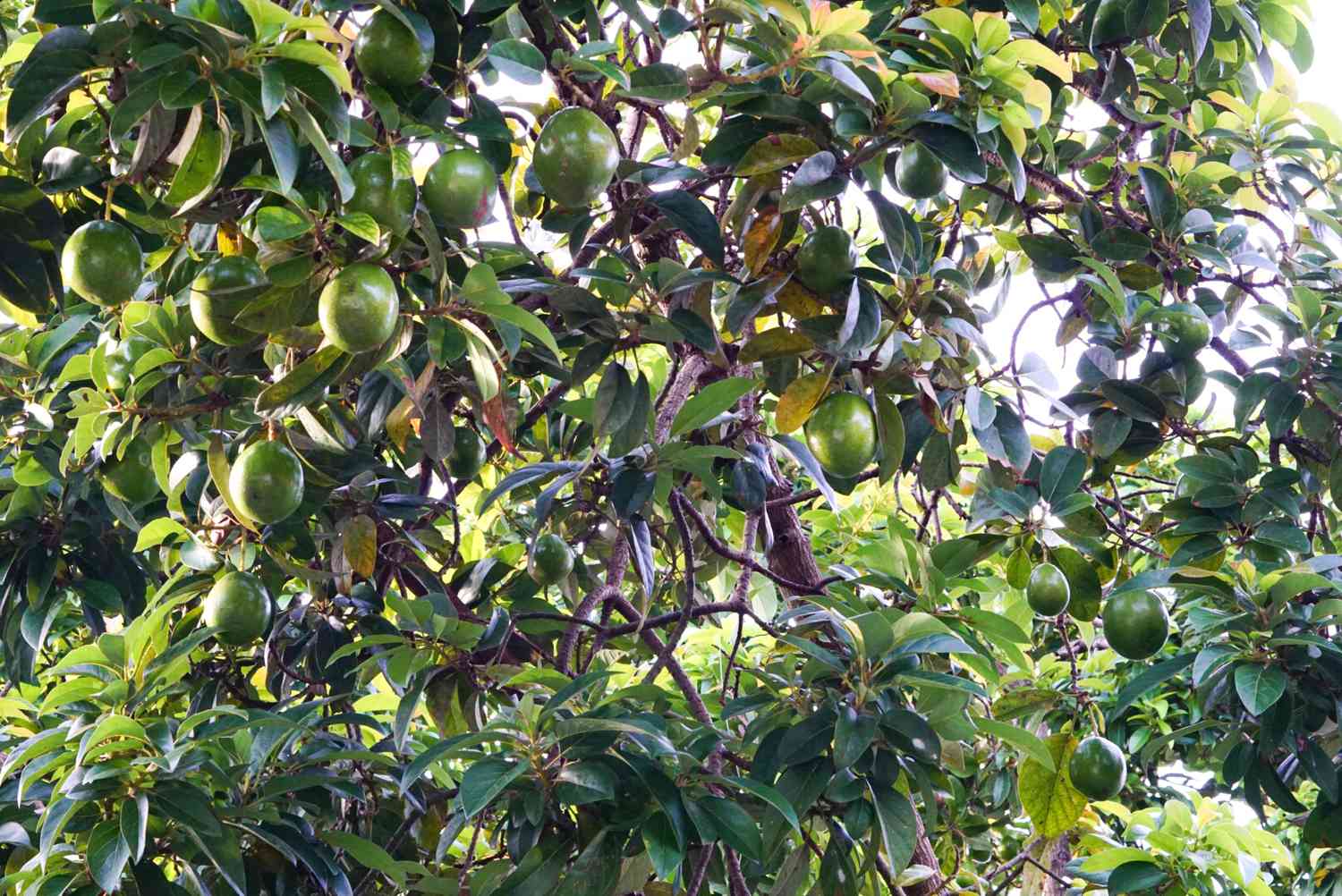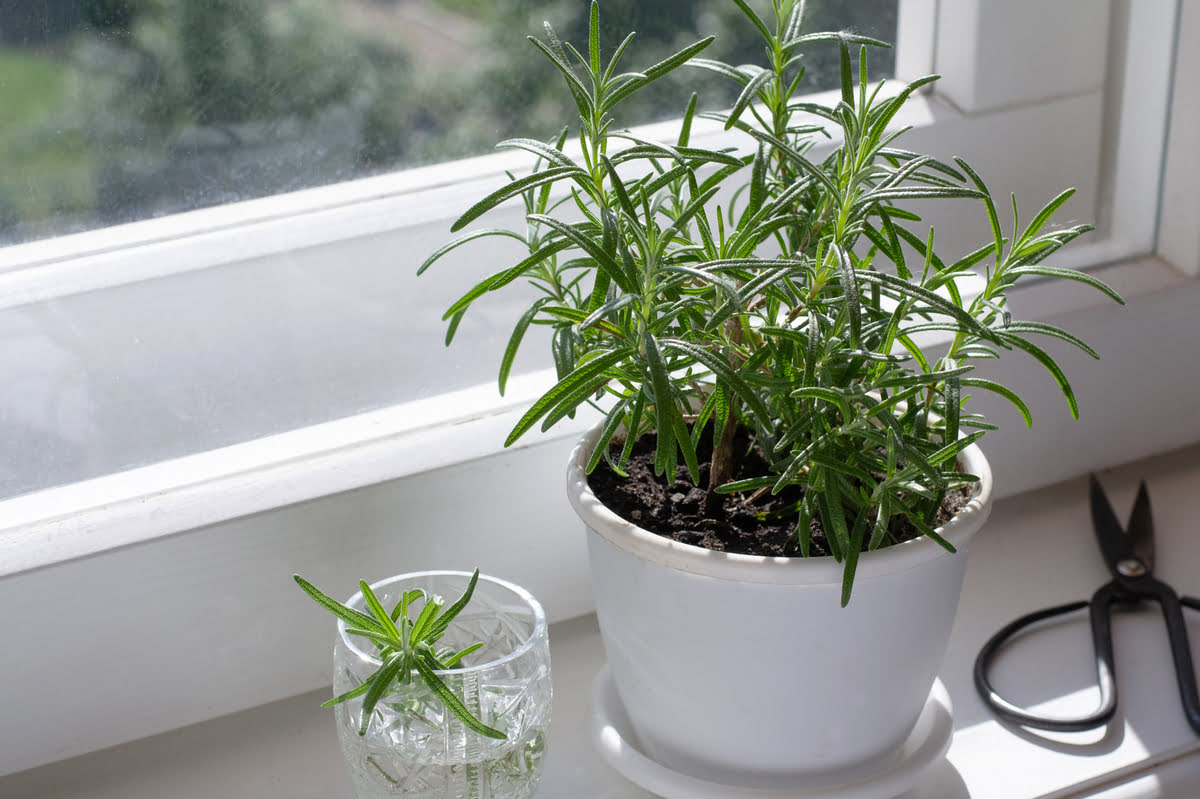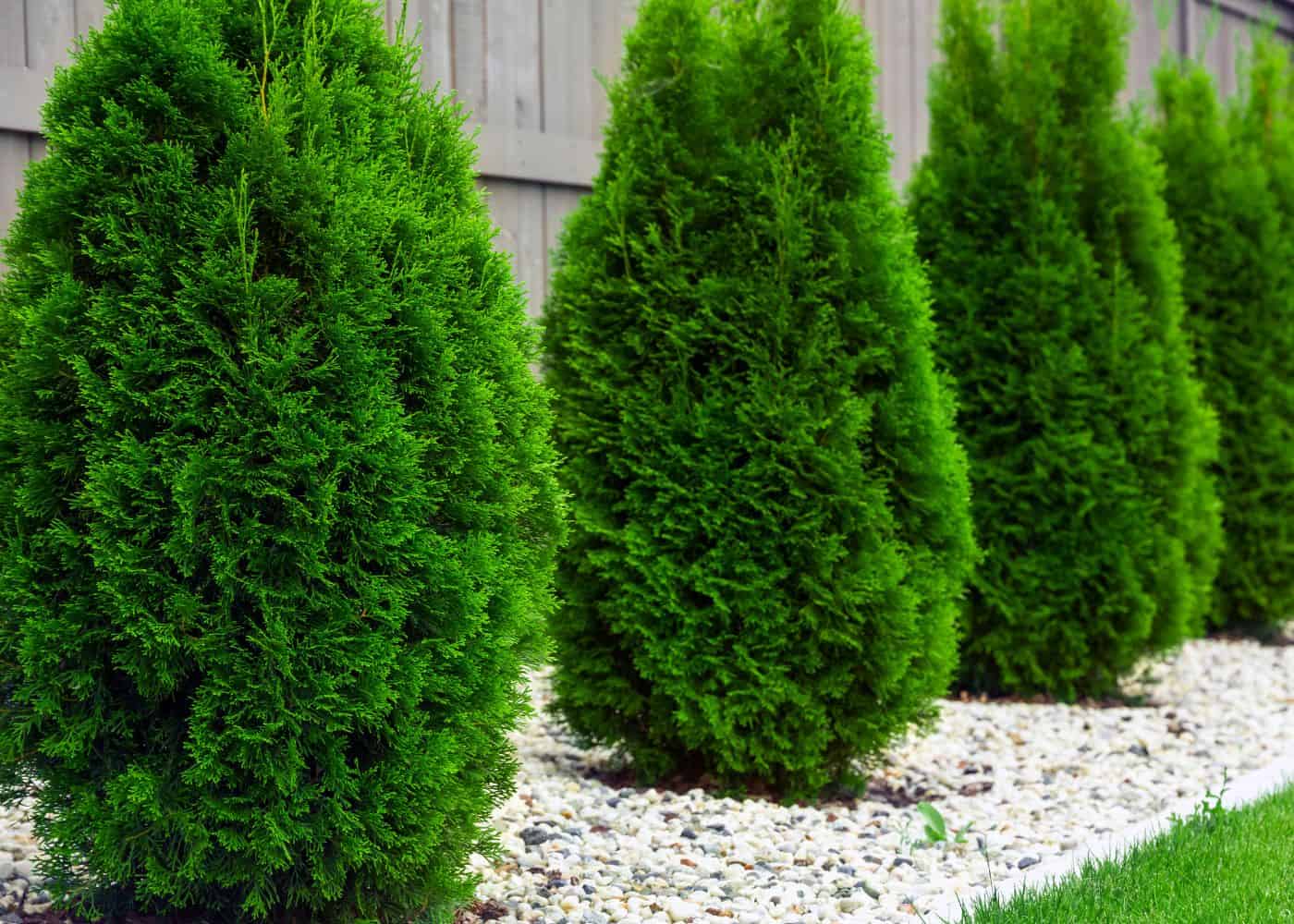Home>Gardening Tips and Tricks>Problem Solving>How Long Do Grass Seeds Take To Grow
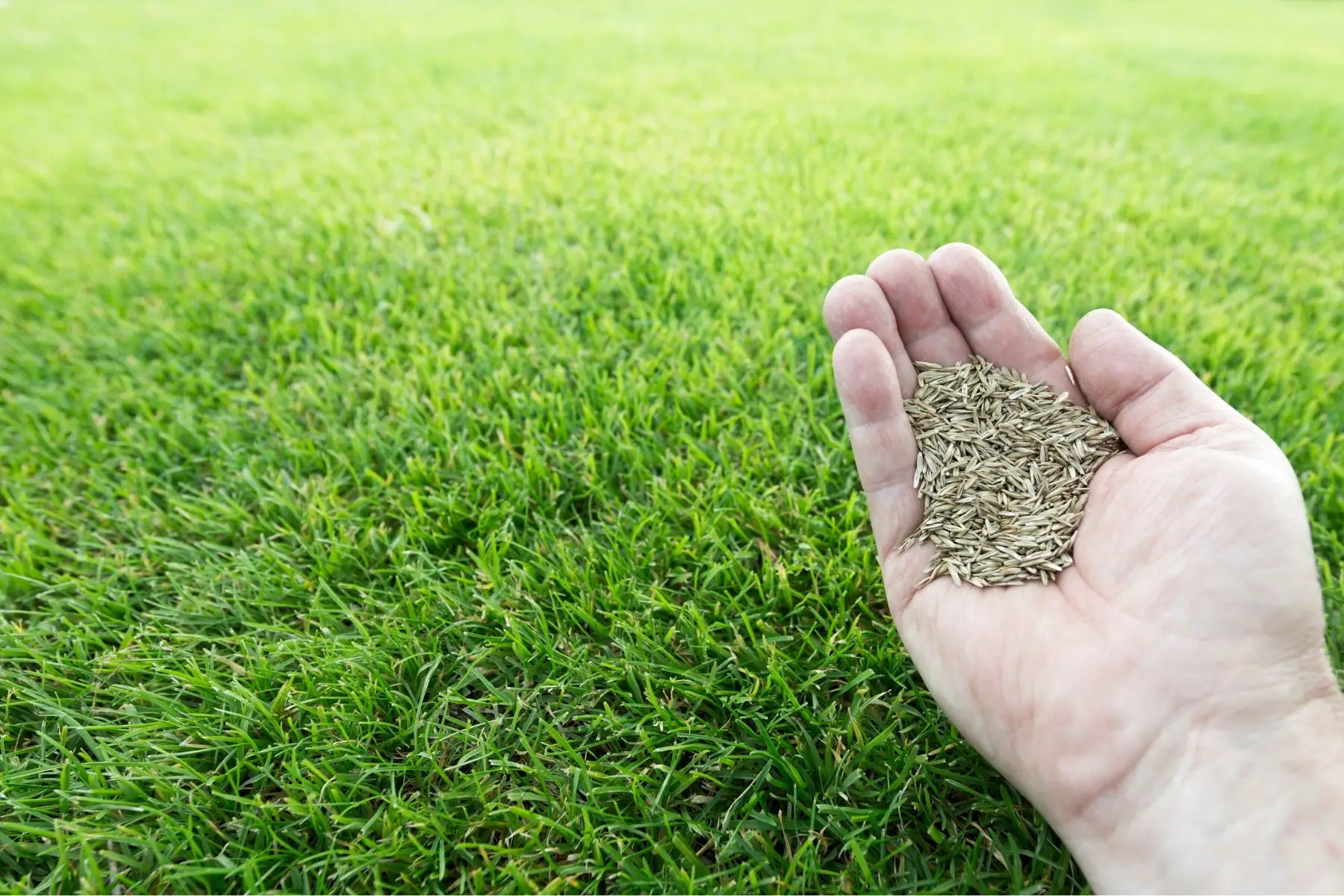

Problem Solving
How Long Do Grass Seeds Take To Grow
Modified: January 22, 2024
Discover how long it takes for grass seeds to grow and solve your problem with our comprehensive guide on problem-solving techniques.
(Many of the links in this article redirect to a specific reviewed product. Your purchase of these products through affiliate links helps to generate commission for Chicagolandgardening.com, at no extra cost. Learn more)
Table of Contents
Introduction
Planting grass seeds is a popular way to establish a beautiful and vibrant lawn. Whether you are starting from scratch or overseeding an existing lawn, understanding the growth timeline of grass seeds is crucial for successful cultivation. While it may seem like a simple process, there are various factors that can affect the growth of grass seeds, such as environmental conditions, seed quality, and proper maintenance.
In this article, we will explore the timeline for grass seed growth, from germination to maturation. We will also discuss the factors that can influence the speed at which grass seeds grow and provide some tips for ensuring successful germination and growth. So, if you are considering planting grass seeds and want to know how long it will take for your lawn to flourish, keep reading.
Factors Affecting Grass Seed Growth
Before diving into the specific stages of grass seed growth, it’s essential to understand the factors that can influence how long it takes for the seeds to grow into a lush, green lawn. These factors include:
1. Seed Type and Quality: The type and quality of the grass seeds you choose will play a significant role in their growth rate. Some grass species, such as Kentucky bluegrass, have a slower germination and establishment period compared to others like ryegrass, which can sprout relatively quickly.
2. Environmental Conditions: The environmental conditions in which you plant the grass seeds can have a significant impact on their growth. Factors such as temperature, rainfall, sunlight exposure, and soil quality all play a role in germination and subsequent growth stages.
3. Soil Preparation: Proper soil preparation is essential for successful grass seed growth. Ensuring the soil is adequately aerated, free from debris, and has the right pH level will create an optimal environment for seed germination and root development.
4. Watering and Irrigation: Adequate watering is crucial for grass seed germination and growth. Consistent and proper watering will keep the soil moist but not overly saturated, allowing the seeds to sprout and establish healthy roots.
5. Maintenance and Care: Regular maintenance and care, such as mowing, fertilizing, and weed control, will promote healthy grass growth and protect the seedlings from competition and stress.
Now that we have covered the factors that can affect the growth of grass seeds, let’s move on to the specific stages of grass seed growth and the timeframes involved.
Factors Affecting Grass Seed Growth
When it comes to growing grass from seeds, there are several factors that can influence the speed and success of the process. Understanding these factors can help you create the ideal conditions for optimal grass seed growth. Let’s take a closer look at the key factors that can affect the growth of grass seeds:
1. Seed Type and Quality: The type and quality of the grass seeds you choose will significantly impact their growth rate. Different grass species have varying germination periods and growth rates. It’s important to select seeds that are well-suited to your climate, soil type, and desired lawn aesthetics. High-quality seeds with a good germination rate will have a higher chance of successful growth.
2. Environmental Conditions: The environmental conditions in which you plant the grass seeds play a vital role in their growth. Factors such as temperature, rainfall, sunlight exposure, and soil conditions can either promote or hinder seed germination and subsequent growth. Each grass species has specific environmental requirements, so understanding and providing the ideal conditions for your chosen grass type is essential.
3. Soil Preparation: Proper soil preparation is crucial for successful grass seed growth. The soil should be well-drained, loose, and free from debris. Aerating the soil can help improve its structure and promote root development. Additionally, testing the pH level of the soil and making any necessary adjustments will ensure optimal conditions for grass seed germination and growth.
4. Watering and Irrigation: Adequate watering is essential for the germination and growth of grass seeds. During the initial stages, seeds require consistent moisture to sprout and establish roots. However, it’s important to strike a balance and avoid overwatering, as it can lead to fungal disease and hinder seed growth. Regular, deep watering is usually recommended to encourage deep root growth.
5. Maintenance and Care: Proper maintenance and care are critical for ensuring the healthy growth of grass seeds. Regular mowing at the appropriate height, overseeding as needed, applying fertilizer, and controlling weeds will help create an environment where grass can thrive. By providing proper maintenance and care, you can minimize competition from weeds, encourage thick growth, and protect the young seedlings from stress.
It’s important to note that the specific factors that can affect grass seed growth may vary depending on the grass species and your specific geographical location. Researching and understanding the requirements of your chosen grass type will help you address any specific considerations that may be applicable.
By taking into account these factors and providing optimal conditions for your grass seeds, you can greatly increase the chances of successful germination and healthy growth. Patience and consistency with maintenance practices will ultimately contribute to the growth and establishment of a vibrant and lush lawn.
Germination Stage
The germination stage is the first phase in the growth of grass seeds. It is a crucial period when the seeds absorb water and start developing into seedlings. Understanding the timeline and requirements of this stage is essential for ensuring successful grass seed growth. Let’s delve into the details of the germination stage:
During germination, the grass seed absorbs water, causing it to swell and initiate the growth process. The outer coating of the seed softens, and the embryo inside begins to expand. As the seed takes in water, it triggers enzyme activity, which breaks down stored nutrients within the seed, providing energy for growth. This process eventually leads to the emergence of a small root, known as the radicle, and the beginning of the development of the shoot.
The germination period for grass seeds varies depending on several factors, including the grass species and environmental conditions:
– Cool-season grasses, such as Kentucky bluegrass and tall fescue, typically have a germination period ranging from 7 to 21 days. These grasses prefer cooler temperatures (around 60-75°F or 15-24°C) for the best germination results.
– Warm-season grasses, such as Bermuda grass and Zoysia grass, have a faster germination period, typically ranging from 7 to 14 days. These grasses prefer warmer temperatures (around 75-90°F or 24-32°C) to germinate successfully.
To promote optimal germination, it is important to create the right conditions. Below are some key factors to consider during this stage:
1. Moisture: Maintaining consistent soil moisture is crucial during germination. The soil should be consistently moist (but not saturated) to provide the necessary hydration for the seeds. Light and frequent watering can help achieve this. It is important to avoid allowing the soil to dry out, as it can hinder germination.
2. Temperature: The ideal temperature for germination depends on the grass species. Cool-season grasses prefer cooler temperatures, while warm-season grasses require warmer conditions. Monitoring and providing the appropriate temperature range will promote quicker and more consistent germination.
3. Protection: Protecting the newly germinated seeds and seedlings from foot traffic, heavy rainfall, and extreme weather conditions is crucial. Erecting temporary fencing or using signs to indicate newly seeded areas can help prevent damage and disturbance during this vulnerable stage.
4. Weed Control: Controlling weeds during germination is important to prevent competition for resources. Before seeding, it is advisable to remove any existing weeds and ensure that the soil is weed-free. Applying a pre-emergent herbicide can also help prevent weed seeds from germinating and competing with the grass seeds.
By understanding the germination stage and implementing proper care and maintenance practices, you can set a solid foundation for the healthy growth of your grass seeds. Patience and consistent monitoring during this stage will contribute to the successful establishment of a lush and vibrant lawn.
Seedling Stage
The seedling stage is a crucial phase in the growth of grass seeds, where the young plants start to establish themselves and develop into mature grass. During this period, the grass seedlings will undergo significant growth and development, including the formation of leaves, roots, and stems. Understanding the timeline and requirements of the seedling stage is crucial for ensuring the successful growth of your grass seeds. Let’s dive into the details:
After the germination stage, the grass seedlings will start producing their first true leaves. These leaves will look different from the initial seed leaves, known as cotyledons. As the seedlings continue to grow, their root systems will also become more established and start to penetrate deeper into the soil. This is essential for nutrient uptake and anchoring the young plants.
The seedling stage typically lasts for several weeks, and the rate of growth will depend on various factors, including the grass species, environmental conditions, and maintenance practices:
1. Grass Species: Different grass species have varying growth rates during the seedling stage. Some species, such as Bermuda grass, have a faster growth rate and can establish quicker, while others, like Kentucky bluegrass, may take longer to develop.
2. Environmental Conditions: Providing optimal environmental conditions during the seedling stage is crucial for healthy growth. The grass seedlings need adequate sunlight exposure and moisture to thrive. It is important to monitor and adjust watering practices to ensure the soil remains consistently moist. Additionally, maintaining the appropriate temperature and protecting the seedlings from extreme weather conditions can promote healthy growth.
3. Maintenance Practices: Proper maintenance practices play a significant role in the development of grass seedlings. Regular mowing, at a higher height to avoid excessive stress on the young plants, promotes thicker and healthier growth. Fertilizing with a balanced lawn fertilizer formulated for seedlings can provide essential nutrients for growth. Additionally, monitoring and controlling weeds during this stage will prevent competition for resources and ensure the seedlings have the best chance to establish themselves.
It’s important to be patient during the seedling stage as the grass plants are still vulnerable. Avoid excessive foot traffic or activities that can stress or damage the young seedlings. Providing adequate care and maintenance will help the seedlings develop into stronger and more resilient plants.
The duration of the seedling stage can vary depending on the grass species and environmental conditions. On average, it can last between 4 to 8 weeks. However, it’s important to note that complete establishment and maturity can take several months or even years, depending on the desired thickness and density of the grass.
By understanding the requirements of the seedling stage and implementing proper maintenance and care, you can support the healthy growth and development of your grass seedlings. Patience, consistency, and continued monitoring will contribute to the successful establishment of a robust and beautiful lawn.
Maturation Stage
The maturation stage is the final phase in the growth of grass seeds, where the seedlings transform into fully matured grass plants. During this stage, the grass plants continue to develop, becoming thicker, denser, and more resilient. Understanding the timeline and requirements of the maturation stage is important for achieving a lush and healthy lawn. Let’s explore the details of this stage:
As the grass plants enter the maturation stage, they will continue to produce new growth, including additional stems, leaves, and root extensions. The root system becomes more extensive, allowing the plants to access water and nutrients from deeper layers of the soil. The grass also becomes more resilient to environmental stresses, such as drought, heat, and foot traffic.
The duration of the maturation stage can vary depending on various factors, including the grass species, environmental conditions, and maintenance practices:
1. Grass Species: Different grass species have varying growth rates during the maturation stage. Warm-season grasses, such as Bermuda grass and Zoysia grass, tend to have a faster growth rate and can reach full maturity within one to three growing seasons. Cool-season grasses, like Kentucky bluegrass and fescue, have a slower growth rate and may take longer to fully mature.
2. Environmental Conditions: Providing favorable environmental conditions is crucial during the maturation stage. The grass plants require adequate sunlight exposure, water, and nutrients to support their growth and development. Regular watering, proper fertilization, and monitoring for any signs of stress or disease are essential for ensuring the plants reach their full potential.
3. Maintenance Practices: Continuing proper maintenance practices is important during the maturation stage. This includes regular mowing at the appropriate height, overseeding as needed to fill in any bare patches, and addressing any pest or weed issues promptly. Proper aeration and dethatching can also promote airflow and water penetration, enhancing the overall health and growth of the grass.
It’s important to note that the maturation stage is not a fixed timeframe but rather a continuous process. The grass plants will continue to mature and develop throughout their lifespan, becoming stronger and more resilient with each growing season.
During this stage, the grass will achieve its full thickness and density, creating a lush and vibrant lawn. Regular maintenance practices, such as mowing, watering, and fertilizing, will help maintain the health and appearance of the mature grass. Proper care throughout the maturation stage, along with regular monitoring for any issues or stressors, will ensure the longevity and beauty of your lawn.
By understanding the requirements of the maturation stage and implementing appropriate maintenance practices, you can support the healthy growth and development of your grass. Patience and consistency in caring for your lawn will result in a fully matured, thriving, and picturesque landscape.
Timeframe for Grass Seed Growth
Understanding the timeframe for grass seed growth is essential for managing expectations and planning for a successful lawn. While the exact timeline can vary depending on factors such as grass species, environmental conditions, and maintenance practices, there are general guidelines to consider. Let’s explore the typical timeframe for grass seed growth:
1. Germination: The germination stage is the first phase of grass seed growth. On average, cool-season grasses take around 7 to 21 days to germinate, while warm-season grasses germinate faster, usually within 7 to 14 days. It’s important to note that these are rough estimates, and factors such as temperature, moisture, and seed quality can affect the actual timeframe.
2. Seedling Stage: After germination, the seedlings enter the seedling stage, where they start developing into mature grass plants. This stage typically lasts for several weeks, ranging from 4 to 8 weeks. However, the time it takes for grass to reach full establishment and maturity can vary based on grass species, environmental conditions, and maintenance practices.
3. Maturation: The maturation stage is the final phase of grass seed growth, where the grass plants become fully matured and reach their desired thickness and density. Warm-season grasses generally achieve full maturity within one to three growing seasons, while cool-season grasses may take longer, often two to three years. Ongoing maintenance, including regular mowing, watering, and fertilizing, is crucial during this stage to support the health and longevity of the mature grass.
It’s important to note that achieving a fully established and mature lawn can take time and patience. Grass seed growth is influenced by various factors, including grass species, environmental conditions, and maintenance practices. Additionally, different grass species have different growth rates, and it’s essential to choose species that are well-suited to your climate and desired lawn aesthetics.
To ensure successful grass seed growth within the expected timeframe, consider the following tips:
– Choose high-quality grass seeds that are appropriate for your region and climate.
– Prepare the soil properly by removing debris, aerating, and adjusting pH if needed.
– Water the grass seeds adequately, keeping the soil consistently moist but not saturated.
– Implement regular maintenance practices such as mowing, watering, fertilizing, and weed control.
– Protect the young seedlings from foot traffic, extreme weather conditions, and pests.
By understanding the typical timeframe for grass seed growth and implementing proper care and maintenance, you can create an environment conducive to healthy and vibrant lawn development. Remember, each lawn is unique, and individual factors can influence the exact timeline. Patience and consistency will ultimately lead to the successful establishment of a beautiful and thriving lawn.
Factors that Could Slow Down Grass Seed Growth
While there are several factors that contribute to the successful growth of grass seeds, certain obstacles can slow down the process. Understanding these factors can help you identify potential challenges and take appropriate measures to overcome them. Let’s explore some common factors that could slow down grass seed growth:
1. Extreme Temperatures: Extreme temperatures, either hot or cold, can significantly hinder the germination and growth of grass seeds. If the temperatures are too high, the seeds may dry out and struggle to establish roots. Similarly, extremely cold temperatures can delay germination and stunt seedling growth. It’s important to choose grass species that are well-adapted to your specific climate for optimal growth.
2. Insufficient Watering: Proper watering is crucial for the germination and growth of grass seeds. Inadequate watering, such as irregular or shallow watering, can lead to dehydration and hinder the absorption of essential nutrients. This can result in delayed germination and weak seedling development. It’s important to ensure consistent and sufficient watering, keeping the soil moist but not oversaturated.
3. Poor Soil Conditions: Soil quality plays a critical role in the growth of grass seeds. Soil that lacks nutrients, has a compacted structure, or contains excessive amounts of clay can slow down seed germination and root development. Additionally, soil with improper pH levels can inhibit nutrient uptake by the plants. Conducting a soil test and making necessary amendments can help create an optimal environment for seedling growth.
4. Competing Weeds: Weeds can compete with grass seeds for essential resources such as light, water, and nutrients. If the lawn area is overrun with weeds, they can outcompete the grass seeds and inhibit their growth. Prior to seeding, it’s important to address existing weed issues by removing them or applying appropriate herbicide treatments. Implementing proper weed control measures during the growth process will help foster the healthy development of grass seedlings.
5. Poor Seed Quality: The quality of the grass seeds you use can also affect their growth. Low-quality seeds may have lower germination rates, resulting in uneven and delayed growth. It’s important to choose high-quality seeds from reputable suppliers to increase the likelihood of successful germination and establishment.
6. Lack of Proper Maintenance: Neglecting proper maintenance practices can hinder the growth of grass seeds. Inadequate mowing or incorrect mowing height can stress the seedlings and slow down their development. Failing to fertilize or apply necessary treatments for pests and diseases can also impede growth. Consistent and appropriate maintenance practices will encourage healthy growth and help overcome potential obstacles.
By being aware of these factors and taking necessary precautions, you can address potential challenges and support optimal grass seed growth. Providing proper environmental conditions, regular maintenance, and attention to detail will go a long way in ensuring the successful establishment of a lush and vibrant lawn.
Tips for Successful Grass Seed Germination and Growth
Achieving successful grass seed germination and growth requires proper planning, preparation, and ongoing care. By following these tips, you can create optimal conditions for your grass seeds to thrive and establish a healthy lawn:
1. Choose the Right Grass: Select grass species that are well-suited to your climate, soil type, and lawn preferences. Consider factors such as sun or shade tolerance, drought resistance, and maintenance requirements. Choosing the right grass will increase the likelihood of successful germination and long-term growth.
2. Prepare the Soil: Proper soil preparation is crucial for successful grass seed germination. Clear the area of debris, rocks, and weeds. Loosen the soil using a rake or aerator to improve air circulation and drainage. If necessary, amend the soil with organic matter to enhance its fertility and improve water retention.
3. Sow Seeds Correctly: Follow the recommended seeding rate provided by the seed manufacturer. Ensure even distribution of seeds by dividing the area into sections and using a spreader or by hand spreading. Lightly rake or roll the area to ensure good seed-to-soil contact.
4. Water Consistently: Adequate and consistent watering is crucial for seed germination. Keep the soil moist but not soaked until the grass seedlings are established. Water lightly and frequently in short intervals to prevent the soil from drying out. Gradually reduce watering as the grass establishes, transitioning to deeper, less frequent watering to encourage strong root growth.
5. Maintain Proper Mowing Height: Once the grass seedlings have reached a mowing height, start mowing at the recommended height for the specific grass species. Avoid cutting the grass too short, as it can stress the plants and make them susceptible to disease and weed competition. Regular mowing promotes thicker, healthier growth.
6. Fertilize Appropriately: Apply a starter fertilizer or a slow-release fertilizer specifically formulated for new grass seedlings. Follow the instructions on the fertilizer packaging to ensure proper application. Over-fertilizing can cause seedling burn, so it’s important to apply the appropriate amount.
7. Control Weeds: Monitor the lawn for weeds and address them promptly. Remove any visible weeds before seeding, and consider using a pre-emergent herbicide to prevent weed seed germination. Spot-treat any emerging weeds with appropriate herbicides that are safe for young grass seedlings.
8. Protect the Seedlings: Prevent foot traffic and avoid engaging in activities that could stress or damage the seedlings. Erect temporary fencing or use signs to indicate newly seeded areas and keep pets and children away.
9. Monitor and Adjust: Regularly monitor the lawn for signs of stress, pests, or diseases. Adjust watering, mowing, and maintenance practices as needed to address any issues that may arise during the growth process.
10. Practice Patience: Remember that establishing a healthy lawn takes time. Be patient and maintain consistent care and maintenance practices throughout the growth process. With time and proper care, your grass seedlings will grow and flourish into a beautiful and vibrant lawn.
By following these tips, fostering proper environmental conditions, and maintaining consistent care and maintenance practices, you can ensure successful grass seed germination and growth. Patience, attention to detail, and ongoing care will contribute to the establishment of a lush and resilient lawn.
Conclusion
Growing grass from seeds can be a rewarding process that transforms your outdoor space into a lush and vibrant lawn. Understanding the various stages of grass seed growth and the factors that can influence it is crucial for achieving successful results. From the germination stage to the maturation stage, each phase requires proper planning, preparation, and ongoing care.
Factors such as seed type and quality, environmental conditions, soil preparation, watering, and maintenance practices all play a significant role in the growth and development of grass seeds. By considering these factors and implementing appropriate measures, you can create an ideal environment for your grass seeds to thrive.
Remember to choose the right grass species for your climate and lawn preferences, prepare the soil properly, sow the seeds correctly, provide consistent watering, and maintain proper mowing height and care. Keeping an eye out for potential obstacles like extreme temperatures, poor soil conditions, competing weeds, and poor seed quality will help you address any challenges that arise.
Be patient during the growth process, as establishing a healthy and vibrant lawn takes time. Monitor the progress of your grass seedlings, making adjustments to your maintenance practices as needed. With proper care and attention, your grass seeds will grow into a matured and beautiful lawn that adds beauty and value to your property.
So, whether you are starting from scratch or overseeding an existing lawn, follow these tips and guidelines to ensure successful grass seed germination and growth. Enjoy the journey of watching your grass transform from tiny seeds to a flourishing and vibrant carpet of green. With knowledge, patience, and consistent care, you can create the lawn of your dreams.

